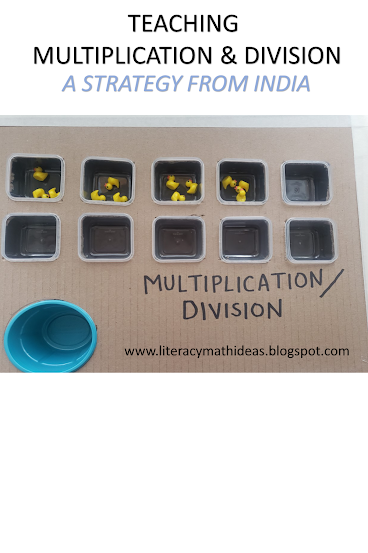To create this, I stacked two pieces of cardboard onto each other and cut an upside "L" shaped slit in the middle. Poker chips with numbers on them were used to create the math problems.
Students slide the one to carry the number. Physically moving the one helps them remember to carry.
Teachers in Finland, Singapore, Japan, and Korea use bar modeling to teach word problems. I have used this method with students that are below level, on-level, and above grade level. Once I saw how using bar models works well with students, I have not turned back.
Not only have students that I have worked with been able to visualize the parts of a word problem, they have also understood why different operations (addition, subtraction, multiplication, and division) should be done. I will do an extensive post on this topic alone. It is very intriguing. With this method, students can "see" how the numbers and ideas work together in word problems. They are also able to notice patterns across word problems.
Word problem instruction begins in first grade in Finland and in Singapore.
Using a simple box with holes cut into it, mini storage containers, and small objects such as beads (I used mini ducks that I found on Amazon), you will have a tool that does wonders for teaching multiplication and division.
This method is a very common method for introducing multiplication and division in India.
I used this is same technique as well as a teacher here the United States.
I have left a small stack of word problems for students to solve. For division, students place the number of objects they are dividing into the larger cup. If the division problem is 18/6 for example, students put 18 small objects in the large cup. Then, they divide the small objects equally between only six of the small containers in the box. The goal is to tell how many are in each cup when 18 is equally divided by 6.
For number lines, a piece of cardboard and a string with a piece of paper taped to it is used. Students can slide the x back and forth to use a number line and answer math problems.
Access hands-on methods of teaching main idea using this resource from my store.Click Here To Access It








%20images.png)

No comments:
Post a Comment